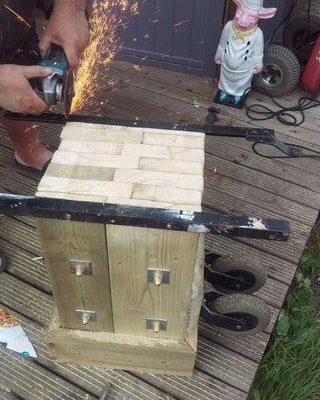How to Make a Metal Forge: 11 Steps

Creating a metal forge at home may seem like a daunting task, but with proper planning and attention to safety, it can be an exciting and fulfilling project. By following these 11 steps, you can build a simple forge that can handle small-scale blacksmithing projects.
1. Research local regulations: Before you begin building your metal forge, make sure to check any applicable laws or regulations in your region. Some areas may require permits, especially if you’re planning on using propane for fuel.
2. Decide on your fuel source: Choose between coal and propane as your fuel source. Each comes with their own set of advantages and disadvantages based on price, availability, and environmental impact.
3. Assemble materials: Gather all necessary materials for your chosen design. This may include fire bricks, refractory cement, metal piping, angle iron or square tubing for the frame, and various nuts and bolts.
4. Build the forge body: Using fire bricks and refractory cement, construct the forge body to whatever dimensions best suit your needs. Generally speaking, a smaller chamber will heat more quickly with less fuel consumption.
5. Insulate the interior: Apply kaowool or other heat-resistant insulation material to the inside walls of the forge chamber to increase heat retention and efficiency.
6. Cut a hole for the burner: Depending on your preferred fuel source (coal or propane), cut an appropriate-sized hole in the forge body to accommodate the burner or fire pit.
7. Construct a frame: Using angle iron or square tubing, build a sturdy frame for your forge body. This will provide stability and safety during forging operations.
8. Install an air supply: If using coal as a fuel source, install a blower to provide consistent and controllable airflow through the coal bed.
9. Set up fuel supply: For propane burners, connect an appropriate propane tank and regulator valve to your burner, ensuring all connections are secure and leak-free.
10. Test the forge: Light the forge for the first time and monitor it closely to ensure proper airflow, heat, and functionality. Make any necessary adjustments before moving on to your first forging project.
11. Practice safe forging techniques: Always use heat-resistant gloves, wear eye protection, and follow safety guidelines when forging metal. Make sure to maintain a clean workspace and keep a fire extinguisher nearby.
By following these 11 steps, you can transform an idea into a reality by building your own metal forge at home. With proper care and maintenance, your forge can serve you well for many years of blacksmithing projects.






